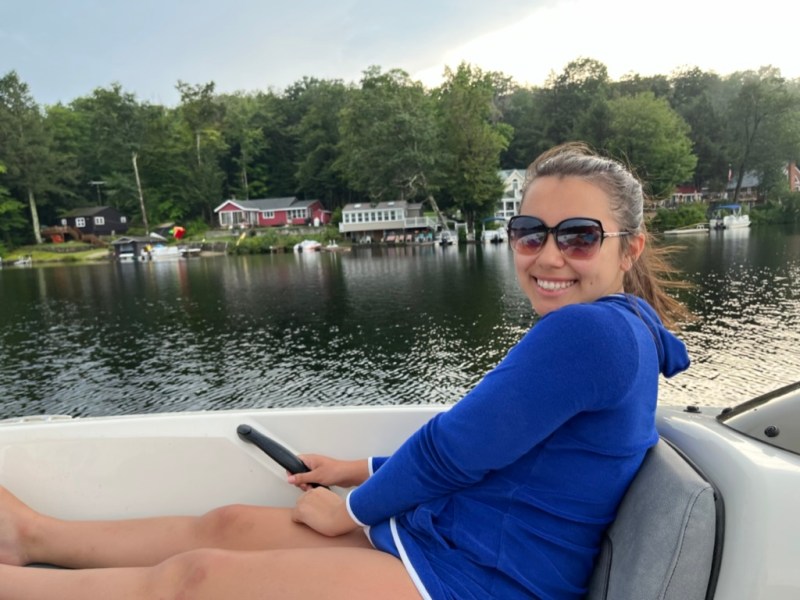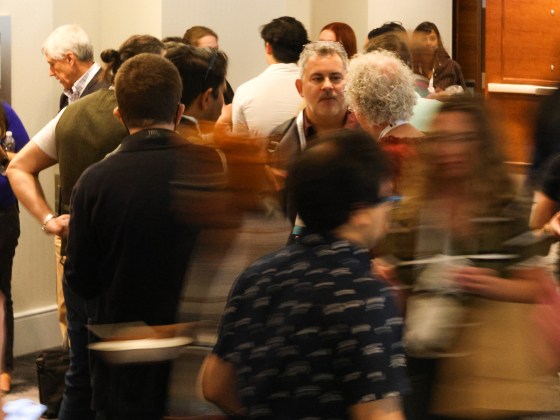My history with an incurable brain disorder, learning simple skills through the disorder and overcoming challenges in daily life with resilience.
When I was six months old I was playing on the living room floor of our two-story raised ranch, minding my own business. My mom was working in the kitchen when she noticed my arms were moving up and down involuntarily. As a genetic counselor, she immediately knew what was going on. I was experiencing infantile spasms also known as “IS.”
IS is a type of epilepsy where an infant experiences a series of seizures causing involuntary movement within the body. This form of epilepsy occurs in one in 1,200 children. Typically, it begins at two to 12 months and peaks at four to eight months of age.
For my case, my mom referred me to a neurologist who put me through an EEG or electroencephalographic test. In the EEG, a hypsarhythmia which is a pattern associated with infantile spasms, was found and I was diagnosed with IS. However, no cause was given because it was so sudden. None of my relatives had IS or any type of epilepsy so it wasn’t hereditary. It seemed I was the first in my family to have IS.
My usual smile and laugh was lost which made my parents’ smiles turn upside down. Almost everyday I would wake up with a frown or a blank expression on my face. I was given two medications: Zonegran and then ACTH, or Adrenocorticotropic hormone, a hormone made by the pituitary gland. The drugs worked to resolve my spasms and my IS was gone. My mom told me that when she saw my smile come back, she and my dad broke down to tears of joy.
No more worry that their daughter would be like this throughout her childhood. Instead, there was hope that IS would never return—but it did a year later.
In 2005, my spasms returned and I tried five medications. There was no improvement with those so my neurologist gave me a medication from Canada that hadn’t been approved in the U.S., Vigabatrin. Thankfully, the spasms resolved within a week in 2006 with the medication and the happy part of me came back again.
The after effects of IS caused me to have speech and language delays so I was referred to a therapist to improve those abilities. I remember being pulled out of preschool some days and working with the therapist through different activities. By kindergarten I was talking nonstop.
I remained seizure free for 10 years until April 2019 in my sophomore year of high school. I recall waking up screaming with my heart racing and feeling dizzy. My dad came into my room and I wasn’t able to speak for a short period of time. My mom called my neurologist and after another EEG I was diagnosed with epilepsy and focal seizures.
Epilepsy is when neurons in the brain overwork themselves and cause “electrical storms” or seizures. With epilepsy, seizures can come in multiple different forms. The most common is limbs start shaking and falling down.
For me, I get dizzy or unable to hold a conversation together because I constantly forget what to say or I am unable to find the words to articulate my thoughts, especially in a place where there is motion or noise around me.
When this happens, I get embarrassed or feel bad about myself because of the struggle to talk to people. I’ll feel my face burning and find my eyes tearing up because I want to keep talking but I can’t.
For example, I’ll be in the passenger side of the car as my dad drives me home from the train station and as he tries to talk to me and I’ll start to answer but suddenly I stop because I don’t remember the next part and the conversation ends in complete silence.
Now in August 2023, I’m still on Lamictal XR and an additional medication Clobazam which I take at night and so far I’ve had no seizures. I recently went to my neurologist after doing another EEG test which found, instead of seizures, I have abnormal seizure activity in my brain. So instead of “storms” I have “noise” in my brain.
One thing I don’t know about my disorder is how long it will last but what I do know is that it has made me stronger.
I am lucky to be alive and my epilepsy isn’t severe. During what seems to be an endless journey so far, I’ve been able to write this timeline of my life with epilepsy and me and my family’s emotions toward this disorder. There have been moments of tears, worry, joy and levels of understanding about epilepsy.
I’ve learned to be resilient with it while working under pressure during a test or doing simple tasks like emptying the dishwasher. It’s hard to ask for help because I fear that no one will get what I’m going through. However, through resilience, I’m able to do the things I enjoy and hang out with the people I love without the scary feeling that I’m going to have a seizure. Sometimes I’ll have to stop myself to make sure I’m thinking clearly so I can connect with them.
I can’t thank everyone enough who has helped me survive and live the life I am right now. Without them, I might not be here today and writing about it in my dad’s home office in our two story raised ranch.






